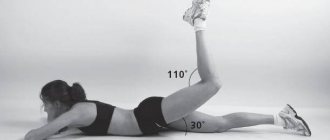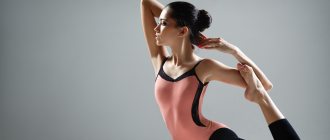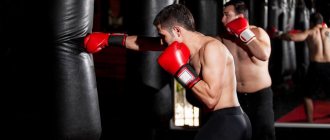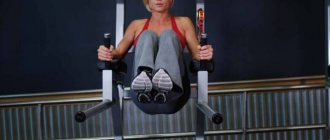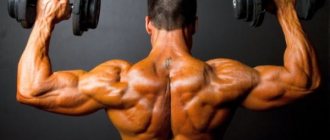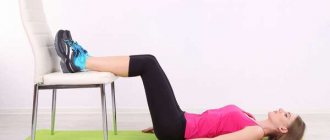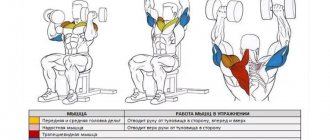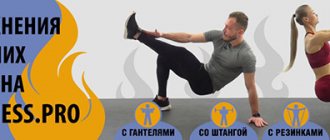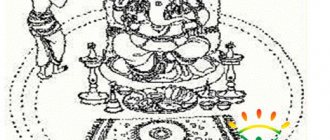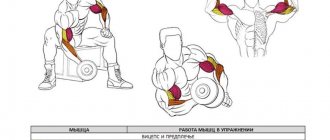Don't expect results too quickly
If you are fired up and want to quickly do the splits, then keep in mind that for a person who is flexible by nature, it may take up to two months to get the longitudinal splits without losing your health or damaging your joints.
How long does it take to do the splits? For an ordinary person who is not gifted with natural flexibility, a period of six months is quite realistic to do the longitudinal splits.
Cross twine may require more time. Moreover, you will need to train at least 4-5 times a week for 30-50 minutes.
See the set of exercises “Splits in 30 days”
Forcing exercises, violating reasonable requirements, artificially increasing flexibility with the use of excessive loads can result in disability or result in extremely unpleasant delayed consequences. Especially in mature years.
Be patient, developing flexibility takes time.
Stretching is very painful
There is stretching for athletes, dancers, and circus performers. And there is one for ordinary people, and it’s called “health stretching.” Professionals achieve “minus” splits and deep backbends through long and hard training, sometimes to the point of a nervous breakdown or tissue rupture (muscles, ligaments). And first you need to understand what you want to achieve.
“Stretching hurts. Those who have the strength to endure will have better results. Over time, you get used to this pain and no longer pay attention to it. If a person is flexible, stretching goes faster,” says Ekaterina Ignatova , circus performer, stretching and fitness trainer.
In health fitness, stretching is used in doses, taking into account the physical capabilities of a person. Essentially, these are easy and virtually painless exercises that should moderately increase flexibility, relax muscles and strengthen the musculoskeletal system.
“Adequate stretching helps achieve flexibility and freedom of movement. This is especially important for those who have a sedentary job. Stretching also minimizes the risk of muscle injury during training and guarantees progressive correction of posture,” says Zalina Tedeeva , master of sports in rhythmic gymnastics, prize-winner of the Russian Championship in rhythmic gymnastics, teacher of fitness choreography.
How often should you do stretching exercises?
Is it possible to stretch every day? Don't forget that muscles need time to adapt. Don't pull them ten times a day. Stretching is not a case of more being better. Muscles need rest after a serious load, which, of course, is stretching.
On the other hand, stretching too infrequently will have virtually no effect. Rare means less than 3 times a week.
The best option is to do stretching exercises daily, once a day.
By the way, you can use changing the intensity of stretching from day to day, that is, training cycles, and be sure to use the principle of progressive overload.
Super series and trisets applied to flexibility exercises will also be useful.
Gender and anatomical features affect the ability to stretch
Flexibility is more likely associated with women: gymnasts, figure skaters, and dancers confirm this. Most often, the structure of the hip joint allows women to perform movements with greater amplitude, including doing the splits. Their connective tissue is more elastic and stretchable than that of men. The structure of muscle fibers also contributes to better stretching. But there are also exceptions.
During pregnancy, a woman becomes more flexible due to increased production of the hormone relaxin, which softens connective tissue.
There are people who, due to genetic characteristics, are not very flexible. It also cannot be ruled out that due to the structure of the joints, most often the hip, some will have a limited range of motion. Such people have poorly developed hip eversion. In particular, this prevents them from completely sitting on the transverse (straight) split.
In general, the issue of anatomical flexibility is not entirely clear-cut. Someone may have a good arch in the back, but have loose muscles and ligaments in the elbow or ankle joints. The ability to stretch can also be affected by muscle imbalances, muscle control (coordination) or immobilization (if your joints have been limited in movement for a while or have not worked at all).
https://youtu.be/9uUGBACJgjw
4. Get plenty of time to stretch.
A noticeable increase in flexibility is too serious and important a matter to be dealt with casually, between other things.
Set aside enough time for stretching exercises, make such exercises a full-time activity if you want to become truly flexible. Don't limit yourself to just a few minutes before and after strength training.
In addition, flexibility exercises require a full warm-up at the beginning and general relaxation at the end of the session, which also requires a certain time.
A reasonable duration of flexibility training is 30-50 minutes, no less. More is possible.
How to stretch correctly?
- Always warm up before stretching;
- Perform all exercises slowly and smoothly;
- Breathe calmly, concentrating on the stretching process;
- Drink water - “fed” muscles will be better able to stretch, and make sure that there is a moderate amount of salt in your diet - its excess interferes with the development of joint mobility;
- Try different types of exercises on the advice of a trainer - some may not suit you due to individual characteristics;
- Don't try to stretch when you're tired—your body will become unruly, increasing the risk of injury.
In general, stretching is beneficial for the body. During stretching, not only a person’s physical condition improves, but also his well-being. Listen to your body, stretch wisely, don’t chase fleeting goals!
Photo: bigstock.com
Don't suffer pain when stretching
Often, stretching exercises for a rigid body are so painful that many simply cannot stand it and quit this activity. Is it possible to stretch without pain?
You should know that stretch marks should never be painful. This is the direct and shortest route to a hospital bed. And for a long time.
But stretching shouldn’t be too pleasant if you want to get serious results in the foreseeable future. No severe pain is the first rule when training flexibility.
Stretching - only for young people
If you are haunted by the idea of learning how to do the splits as an adult, find yourself a good coach. And if you decide to practice on your own, carefully monitor the process, do not allow severe pain, this is fraught with muscle strain.
Of course, in childhood and adolescence, joints are more mobile, muscles and ligaments are obedient. Flexibility decreases with age, especially without constant training. But even if you start exercising at the age of 35-40, you can not so much stretch as you can develop freedom of movement. Sometimes it happens that an adult can be more flexible than his child.
Proper stretching will help you get rid of back and lower back pain, improve your posture and simply be in good shape.
“The main objectives of stretching are leisurely, smooth stretching and gradual strengthening of the muscles of the entire body. Muscle fibers become more elastic, as they are better supplied with nutrients,” says Zalina Tedeeva.
Anna Lunegova's yoga course will help make your body flexible and resilient. Read more about the course here.
Remember Compensatory Exercises and Symmetry
The human body is a complex biomechanical system regulated by brain signals. It is impossible to stretch the body in one place without consequences without destroying the balance.
Balance requires stretching opposite parts of the body as well. For this, there are special compensation exercises that should be used immediately after some stretching.
And, of course, the body should be stretched symmetrically, giving equal attention to each limb or half of the body. If you stretch your right leg for 10 minutes, be so kind as to stretch your left leg for the same amount. Nothing less. Only in this case can you count on the benefits of stretching exercises.
Look at the stretching with Ekaterina Firsova on the blog - you can’t help but like this complex! She will teach you how to pull the twine correctly!
Exercises with a chair for weight loss
For each part of the body, there are certain exercises that actively work specific muscles. They can be performed separately, but it is better to alternate them correctly - all the muscles of the torso and limbs will work, which will result in harmonious weight loss.
For hands
To tidy up your arms and at the same time work out your chest muscles, ensuring a toned shape for your mammary glands, you just need to do exercises with a chair:
- Push ups . They can be classic, lightweight and complicated. In any case, the emphasis is placed with the hands in the seat of the chair - on the entire open palm, fingers looking forward. Push-ups are performed in a calm rhythm, with even breathing - at the moment of lowering the upper part of the body, take a deep breath, return to the starting position - exhale.
- You can lean not on the seat of the chair, but on the back - this will be a lightweight option and will be ideal for overweight people who are just starting to play sports. There is also an option for “reverse push-ups”: the legs are supported on the chair (toes), the hands are placed on the floor - it turns out that the head is low. This will be a more complicated option, available only to those people who have been involved in physical education for quite some time.
- Squats with emphasis on the hands. You need to stand with your back to the chair, place your hands behind your back on the seat and sit down so that your pelvis is parallel to the floor. Using your hands (they will repeat the movement of push-ups), you need to lower and raise your torso. At the same time, your legs stand shoulder-width apart, with your feet full; you cannot lower your buttocks completely to the floor.
For legs
Beautiful hips and slender legs can be achieved with the following exercises:
- Stand up straight, grab the back of the chair with your hands. Jumps are performed with the arms up, while simultaneously spreading the legs to the sides.
- Without changing the starting position, the leg is pulled back, then raised to its maximum height, lowered down and set aside, followed by lifting. The same exercise is repeated for the other lower limb.
- Sit down, holding onto the back of the chair. Stand with emphasis on the toes of one leg, and take the other to the side. Then repeat the exercise, but take your leg back.
- Standing facing the back of the chair and resting your hands on it, raise one leg forward, bending at the knee joint, then slowly move it back and straighten it. Repeat the exercise for the other lower limb.
- Stand sideways to the chair, place your foot close to the seat. Perform squats on the supporting limb, lowering the buttocks as low as possible. Your hands should be positioned in front of your chest. After completing at least 10 repetitions, change your supporting leg.
If you have a low stool or flat platform, you can additionally perform steps that simulate climbing stairs. First, the legs stand alternately on the platform with their full feet, and as they become trained, on their toes.
For abs and belly slimming
When performing a set of exercises with a chair for the press, you need to keep not only the abdominal muscles, but also the buttocks in constant tension. The most effective are:
- Raises of the pelvis and lower limbs. You need to lie on the floor, place your legs on a chair so that your hips form a right angle in relation to the floor. As you inhale, you need to lift one leg up, while simultaneously lifting your pelvis off the floor and lifting it as high as possible. You need to fixate in this position for 2 – 5 seconds and slowly return to the starting position. Then the exercise is repeated for the other limb.
- Leg twists. Stand facing the back of the chair at a distance of 20 cm, lean on your hands. Tilt your head down, slightly arching your back and raise your legs, bent at the knee, as close to your stomach as possible. Then move it to the side, while simultaneously rising on the toe of the supporting lower limb. Then the exercise is repeated for the other leg.
- Swing your legs back. You need to lean your hands on the seat of the chair, bending your legs at the knee joints. Then, while inhaling, you need to slowly straighten your legs, move your body weight to one of them (rise to your fingertips), and perform 10 to 20 swings back with the other. Repeat for the second lower limb.
For the buttocks
In principle, all of these exercises will help strengthen the gluteal muscles, but they can be supplemented with:
- Swing your legs in an inclined position. You need to lean on the seat with your hands so that the body drops down - the elbow joints are bent, the face practically rests on the seat, the legs remain straight. Alternately, swing the lower limbs back and to the side without bending them.
- Half squats on one leg. Stand sideways to the chair at a distance of an outstretched leg - place it with your foot on the back. You need to perform half squats on the supporting leg at a slow pace, then repeat everything for the other limb. For women, this exercise will be universal, because it works not only the muscles of the buttocks, but also the inner thighs.
- Swing your legs to the sides. Stand facing the back of the chair, grab it with your hands. Slowly raise one leg to the side, lock in the maximum possible position for 5 seconds and forcefully pull the toe towards you.
When performing all these exercises, you need to keep your buttocks tense, then their development will be more effective.
Massage
What exercises help with constipation? First of all, doctors recommend normalizing intestinal function through massage. Regular implementation of such procedures will speed up emptying.
It is advisable to do a massage in the morning, without getting out of bed. First you need to carry out 10 stroking, rubbing and kneading in the navel area in a circular motion, strictly clockwise
.
After this, you need to bend your right leg at the knee, and then, pressing it to your stomach, hold it in this state for several seconds
. Next, you should slowly get out of bed, placing your right foot on the floor first.
To implement another method of massage, you need to soak a towel in cold water and then squeeze it hard. Having wrapped a rag around your right hand, it should be moved from the stomach towards the lower rib (on the right side) and back 5-9 times
. After this, a similar procedure must be performed with the left hand.
If you perform these simple steps every day, you will definitely be pleased with the results.
Regular walking
Among the exercises for constipation, for optimal bowel health, you need to do walking. This is the most effective way to normalize the process of defecation, both in adults and in the elderly.
The recommended daily rate is considered to be walking from 3 to 5 km. In addition, it is recommended to take walks in the fresh air while walking.
. What changes occur in the body due to walking:
- Activation of intestinal motility and the entire digestive system occurs. Due to the contraction of the anterior abdominal wall, the large and small intestines are stimulated during constipation.
- The lungs are actively ventilated. When they fully expand during walking, a certain pressure occurs on the diaphragm. When it contracts, massaging movements occur in the area of the upper intestine, which leads to the launch and strengthening of motility
. This is very important against constipation. - Microcirculation increases. Daily walking, like other sports, provokes sufficient blood flow to all organs and systems, enhancing their functions
. This also applies to the rectum, which is very important for constipation.
Why is gymnastics important in old age?
Gymnastics for constipation in older people has a positive effect on the condition of the entire digestive system.
Regular exercise for constipation will restore normal intestinal function and normalize regular bowel movements.
Important benefits of regular exercise are:
- Peristaltic movements are stimulated. Motor skills are activated in older people, which leads to an increase in the tone of the walls of the excretory organ.
- Metabolism accelerates. Regular therapeutic exercises provoke good and rapid absorption of beneficial elements and their entry into the blood
. Because of this, the functioning of the entire digestive system is normalized. - The tone in the body increases, metabolism and all vital processes in the body accelerate. Physical exercise for constipation has a beneficial effect not only on the digestive system, but also on other organs and processes.
Such gymnastics is useful not only for older people, but also for other patients suffering from constipation.
But for older patients this is most necessary, because this is an excellent opportunity not only to improve intestinal function and get rid of constipation, but also a number of measures that allow you to adjust blood sugar levels and improve blood pressure.
To do this, it is enough to perform exercises at home for normal functioning of the entire intestine.
What is constipation
Constipation is divided into two types:
Atonic constipation
This type of constipation occurs due to decreased intestinal tone. Due to sluggish peristalsis, the body's waste products pass too slowly through the gastrointestinal tract. The atonic form is more common in older people and in people with a sedentary lifestyle. An unhealthy diet with little dietary fiber can also cause constipation. But it's not that bad. This type of disorder can be corrected, and constipation exercises will help you with this.
Spastic constipation
This type of constipation causes spasms of the intestinal muscles. Feces cannot pass through narrow spaces, causing pain. Bloating and a feeling of heaviness in the abdomen are some of the common symptoms of spastic constipation. Bowel exercises won't help much here. Often, the catalyst for spastic constipation is certain diseases of the body, such as endocrine ones. Stress can also affect bowel function.
Before taking measures to treat constipation, be sure to consult your doctor. Gymnastics for the intestines, or rather some exercises, can aggravate diseases that you do not know about.
Constipation is divided into three stages:
- Compensated
- Subcompensated
- Decompensated
In the first case, few people attach importance to problems with stool. People from 25 to 40 years old are susceptible to this category. Most often, those suffering from this stage try to normalize their bowel movements with diets for constipation. With constipation, people with this category do not have pathological changes.
In stage B, the person experiences more unpleasant sensations. Abdominal pain and bloating significantly reduce quality of life. Lack of bowel movements for two or three days is the main symptom.
In the third case, we are dealing with a severe form of constipation. A week-long absence of bowel movements, pathological changes in the intestines, pain during bowel movements (caused by cracks in the intestinal walls), all this is an incomplete list of symptoms associated with category C.
That is why timely treatment of constipation at an early stage is important. Since these categories merge into one another, reducing the chances of complete relief from the difficulties caused by constipation. Whatever treatment you are prescribed, be it intestinal gymnastics, diet, or medications, it will have a greater effect at the early stage of the disease.
Modern medicine offers a wide range of medications to combat this disease. But as often happens, some medications cause more harm than beneficial properties. Many of them are addictive, so using medications to stimulate peristalsis should be done with extreme caution.
Therapeutic exercises are a direct effect on the intestines, and most importantly not medicinal. Bowel exercises for constipation can significantly improve your condition. You can learn more about some exercises for constipation in adults below.
Intestinal exercises for constipation have a number of contraindications. Therefore, be sure to undergo an examination for an accurate diagnosis. Exercises for constipation, in addition to their direct purpose, will have a good effect on the body as a whole.
Gymnastics for the elderly
Exercises for constipation begin with morning exercises. But not all older people have the physical ability to perform it due to age-related changes.
Muscles, joints and other organs may malfunction. But there are very simple exercises for constipation that can improve the functioning of the intestines and overall digestion.
Doctors encourage doing morning exercises, which should be done before breakfast.
Before starting classes, half an hour in advance, drink a glass of clean, cool water. It helps improve and normalize peristalsis.
What exercises are included in the morning set of classes:
- Bend the body in opposite directions while standing
- Lunges on both legs
- Circular pelvic rotations
- Correct squats
It is very important not to overload the body of older people. You need to properly distribute the load and not overwork
. You should not force yourself to perform exercises by force, especially if pain is clearly felt in the muscles and joints.
But ignoring classes is also unacceptable. They are very effective against constipation, so doing them is a must.
Exercises for bowel function for constipation
Constipation exercises are an effective method to combat constipation. Exercise for the intestines stimulates peristalsis and promotes the removal of gases.
It would be better to do bowel exercises for constipation in the morning, before you have eaten. Drink 250 ml of boiled water at room temperature. One spoon of honey is allowed. Don't worry if you haven't found time for morning exercises for constipation; you can do exercises for lazy bowels at any time, but only two hours after eating.
It is important to mentally prepare yourself for the fact that you will have to do exercise for constipation every day.
Starting small and gradually adding load, you will have to maintain activity at the proper level. When you give up your activities and return to your usual lifestyle, the problem of constipation will most likely return.
